7 Phrases From Parents That Can Ruin the Relationship Between Siblings Once and Forever

Some of those potatoes you left in your pantry have turned green — are they still safe to eat? When these vegetables come in contact with direct sunlight, they turn green because of a little thing called chlorophyll. It’s a green pigment plants need to produce food during a process called photosynthesis. To prevent potatoes from turning green, you’ll need to store them in a dark and well-ventilated area.
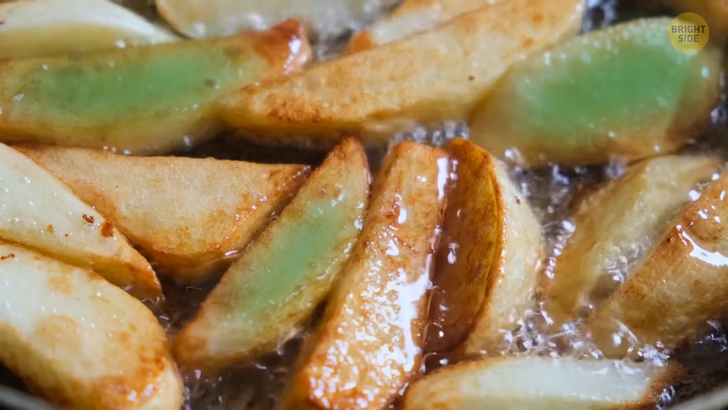
While chlorophyll itself is harmless, once the amount of this substance increases in a potato, it triggers the appearance of another element called solanine. This is a substance found in tomatoes, eggplants, and, most importantly, potatoes. Not only does it make these vegetables taste bitter, but it can also cause serious health problems, for example, related to digestion. While it’s best to refrain from eating green potatoes, you can always double-check if they are good to eat by tasting them. If you sense a bit of bitterness, it’s best to throw them away.
What about sprouted potatoes — are they good to eat? It depends. That substance solanine has a lot to do with it again. If a potato otherwise looks good and only has a couple of small sprouts, you can remove those and safely eat the vegetable. They won’t be the best-looking potatoes, though.
So if you want to cook a dish where you need neat vegetables, you might want to skip the slightly sprouted potatoes and use them for something else, like soups or mashed potatoes. But if your potato looks like it’s grown arms and legs, you’ll be on the safe side if you throw it away. Solanine aside, it will also taste bitter, so you might end up cooking it for no good reason at all.

Let’s look at some other tips to help you improve your kitchen safety skills. Like how you should wash fruits and vegetables with hard rinds, say melons or cucumbers. Simply running water over them may not be enough to get rid of all the nasty stuff on their surface. Best to use a sterilized scrub brush and some elbow grease to really get into those ridges and clean the vegetables properly. That way, the dirt and bacteria won’t transfer from your veggies to your cutting knife or board.
A fan of grilled meat? Might want to get a food thermometer to make sure you’re always on the safe side. If you’re an experienced cook, you might be able to visibly judge if the meat is ready. But if you’re really not sure if the product is done, a thermometer will be your best friend. Specialists claim that whole cuts of meat need to reach a minimum internal temperature of 140˚ Fahrenheit before you can serve them. Fish needs to reach 145 degrees, while ground meats need a minimum of 160˚. Poultry or pre-cooked meat, like hotdogs, needs to be heated to at least 165˚F.
To safely store all the food you’ve bought for the rest of the week, you also need to make sure that your household devices are working properly and are set at the right temperatures. Like your refrigerator temperature, for example, which should be 40˚F or lower. As for the temperature in the freezer, it should be 0˚F or lower.
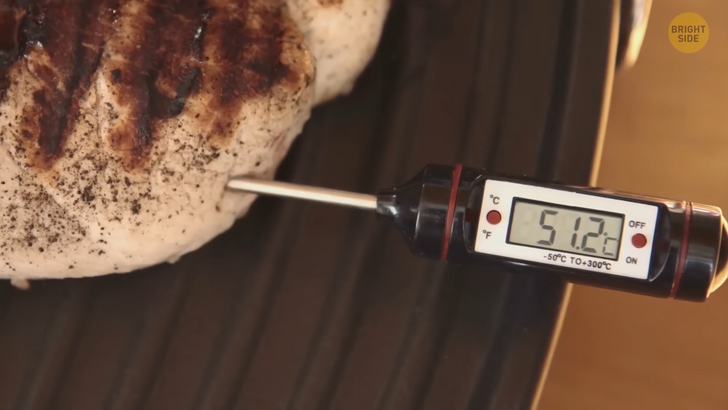
That thermometer I mentioned earlier can be of use here, too, if you need to check whether your appliances are working properly. Luckily, most of these devices come equipped with their own thermometers these days. Do you need to bring your own food to your neighbors’ barbecue party? Make sure to keep it cool on the way. Meat, poultry, and seafood need to be transported at 40˚ Fahrenheit at most. You can always use an ice box; just make sure to place its cooling parts in the freezer the night before.
The way you organize food in your fridge can affect its quality, too. Raw meat, for example, needs to be stored on the bottom shelf of your fridge. It’s also best to keep it away from fresh produce and ready-to-eat dishes. Have you experienced a long power outage recently? Sorry, but all the food in your fridge needs to go. If your fridge was offline for only a couple of minutes, you’re most likely safe. Otherwise, you’ll need to get rid of all the perishable foods.
When it comes to canned food, you also need to take into consideration its acidity levels. Products that are high in acidity, like tomatoes, grapefruit, and pineapple, can be stored for 12 to 18 months if unopened. Canned vegetables, meat, poultry, and fish can be stored for longer, anywhere between 2 and 5 years — if the storing conditions are right and if the can itself remains undamaged. If anything looks rusty or has bumps on it, remove it from your pantry.
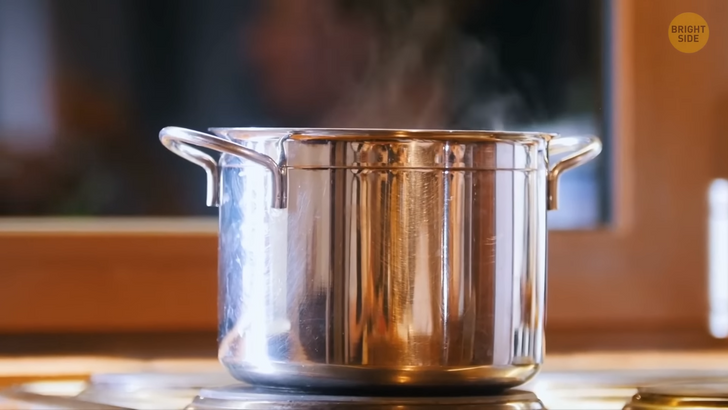
You also need to be careful with storing your acidic food, as you should never use reactive pans. You might know that aluminum is used a lot in cookware because it’s good at conducting heat. But cooking or storing something in an aluminum pan might not be so good for your food. Tomato sauce, for example, can damage aluminum or cast-iron pans, and that will show in both the taste and the color of your food. Nonreactive pans are your safest bet, so make sure you invest in a good quality stainless steel, enamel-coated, or glass set of pans.
A lot of dishes taste better if you pre-marinate the ingredients. Just make sure to always marinate food in the refrigerator. If you leave it outside on your counter, it will soon reach room temperature. And then bacteria will start to multiply. And it may be dangerous if you don’t cook that product at a high enough temperature afterward. Also, never reuse the marinating liquid.
The first rule whenever you’re gathering tools to prep for dinner: multiple cutting boards for each type of food. One should be reserved for meat and seafood, while others should be divided between vegetables, fruit, and baked goods. It’s the best way to avoid cross-contamination in the kitchen.
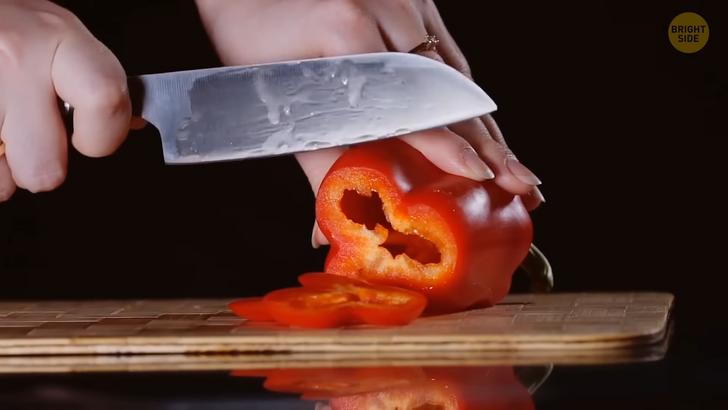
And speaking of cutting boards, your best bet would be to invest in a good bamboo one. This material absorbs little to no moisture and isn’t easily damaged by knives. It’s way more resistant to bacteria than any other type of wood, and it also lasts longer. Not to mention the fact that it also looks really cool.
Eggs can cause a lot of trouble if not stored correctly. But here are a couple of tips you can use. Fresh eggs are safe to eat for up to three weeks after purchase. Keep them in their original carton. Hard-boiled eggs need to be consumed within the week, no matter if they still have their shells on or not. Lastly, if you keep leftover egg dishes in your fridge, make sure you eat them within three to four days.
We all want our batter to be smooth and free of lumps. Don’t you? But overmixing can be bad for your dish, too. Way too much elbow grease can cause gluten to form in the flour, which will give you a really tough batter. The trick is to mix lightly just until the batter is homogenous.
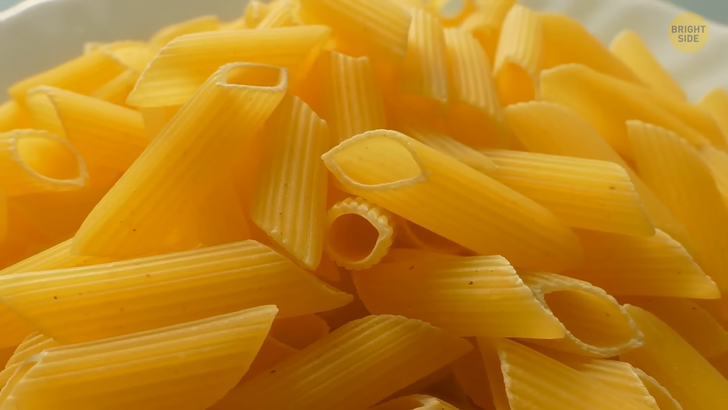
Dried pasta comes in all sorts of different shapes and sizes for a reason, you know? That’s because you should be pairing a specific type of pasta with the texture of the sauce. Like pasta shells, for example, go better with denser and chunkier sauces. Why? Because the sauce is gathered inside the shell, making it easier to serve and eat. The ribbed outside surface also helps with covering the shells in the sauce.
Next time you mess up a tray of cookies and end up burning them, you can save them with your trusty grater. Just grate off the blackened parts from the bottom after carefully removing the cookies from the tray. Also, if you ruin their shape a bit, you can always dip them in melted chocolate. After the chocolate gets a chance to cool down, you’ll be left with perfectly shaped pastries.











